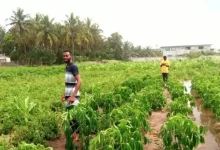On March 2011, the late Professor Evans Fiifi Atta-Mills launched a programme of action to revive the ailing cotton industry in the country. Dubbed: “The White Gold” campaign, the programme aimed at encouraging farmers mainly in the Northern, Upper East and West Regions to grow cotton in the 2011 farming season.
As part of the reforms, the cotton belt mostly in the northern parts of the country, was zoned into three parts and allocated specific companies with exclusive rights to pre-finance and purchase seed cotton in the various zones.
The roll out of the programme was an admission of the fact that the industry’s potential in terms of its contribution to the Gross Domestic Product of the country cannot be overemphasised. In 2010, it was estimated that the country lost about $625million due to the collapse of the industry.
Apart from the loss in terms of foreign exchange earnings, more than 100,000 farmers were also estimated to have lost their livelihoods due to the collapse. From a high of about 20,000 tonnes per annum, production slumped to about 4000tonnes.
The decision to resuscitate the industry formed part of the government’s agenda to diversify the country’s cash crop and rake in more revenue development. It was also intended to create a cash crop economy for northern Ghana similar to cocoa in southern Ghana.
The optimism towards the programme and its ability to revamp the industry was high and offered hope for the many beneficiary farmers who had lost their livelihoods as a result of the collapse of the sector.
However, nearly 10 years after the launch of the programme, the cotton industry is yet to rediscover its former self. Recently, the Minister of Agriculture,







